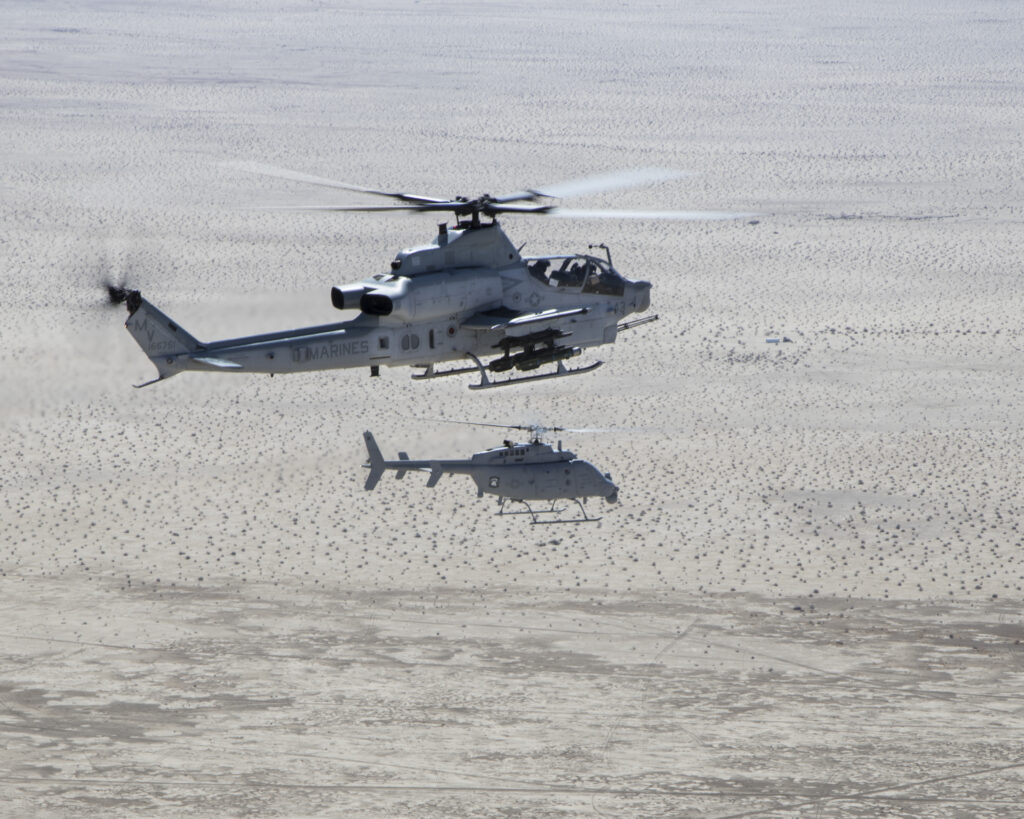
Washington, D.C. — Marines from Marine Operational Test and Evaluation Squadron One (VMX-1) and Sailors from Helicopter Sea Combat Squadron 23 (HSC-23) teamed to conduct tactics development in integrating manned and unmanned rotary-wing aircraft at Naval Air Facility El Centro, California, on March 10, Headquarters Marine Corps said March 15.
During the exercise, VMX-1’s UH-1Y Venom and AH-1Z Viper helicopters conducted attacks while Marines and Sailors operating in the ground control station assisted with the target detection and strike coordination utilizing a MQ-8C Fire Scout.
“This opportunity promotes greater familiarization and concept development of the manned-unmanned teaming that builds confidence and efficiency throughout the Blue-Green Team,” said VMX-1 Commanding Officer Col. Byron Sullivan. “Our partnership plays an integral part of the commandant and [Chief of Naval Operation]’s vision to embrace the future of warfare and turn it into our advantage on the battlefield.”
The services continue to develop manned-unmanned tactics to better align with the 2018 National Defense Strategy and the Commandant’s Planning Guidance. As the exercise in El Centro progressed, the Navy-Marine Corps team became more proficient in planning, communicating, and coordinating effective fires from manned and unmanned rotary wing aircraft. The proliferation of unmanned rotary wing platforms on U.S. Navy ships makes integration with Marine rotary wing and the MQ-8C a likelihood in the littoral environment.
“Adversaries are going to be placed on the horns of a dilemma as we strengthen our naval expeditionary force in leveraging unmanned systems to complement our rotary wing,” said VMX-1 Science and Technology lead Maj. Ben Henry.
The mission of VMX-1 is to conduct operational test and evaluation of Marine Corps aviation platforms and systems.
- Amphibious Combat Vehicles Mark Operational Debut in Pacific - May 7, 2024
- Fairbanks Morse Defense Awarded Purchase Order for Common Rail Technology Retrofit Kit on San Antonio Class Ships - May 7, 2024
- NOAA Breaks Ground on New Marine Operations Center Facility in Newport, Rhode Island - May 7, 2024



